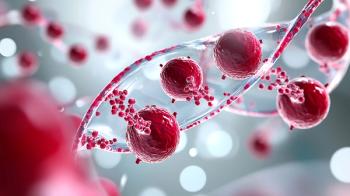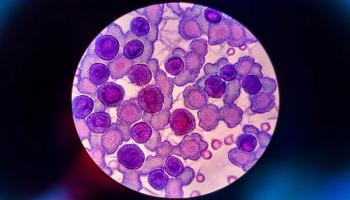
- February 2016 Autoimmune Disorders
- Volume 82
- Issue 2
Type 1 Diabetes: Improving Care
Type 1 diabetes is an autoimmune disease in which the beta cells of the pancreas are destroyed and are unable to produce an adequate amount of the hormone insulin.
Type 1 diabetes (T1D), formerly known as juvenile diabetes and insulin-dependent diabetes, is an autoimmune disease in which the beta cells of the pancreas are destroyed and are unable to produce an adequate amount of the hormone insulin, which is required to put glucose to use and store it in muscles and organs. The result is too much glucose in the bloodstream.1
Approximately 1.25 million American adults have been given a diagnosis of T1D, including 200,000 individuals younger than 20 years.2 This disease can develop at any age, but the typical age at diagnosis is the early teen years.3 In 2008 and 2009, approximately 18,400 individuals younger than 20 years were given a diagnosis of T1D annually.3 The estimated annual cost of T1D in the United States is $14 billion.2 T1D is thought to decrease life expectancy by up to 13 years.2
Causes
Although the exact mechanism that causes this autoimmune disorder is under investigation, some theories include family history, genetics, low vitamin D levels, early exposure to cow’s milk, drinking water that contains nitrates, being born with jaundice, having a mother who had preeclampsia during pregnancy, and exposure to certain viruses (eg, Epstein-Barr, Coxsackie, mumps, cytomegalovirus).4
Symptoms
The symptoms of T1D frequently have a sudden onset and may not appear until 90% of the pancreatic beta cells have already been destroyed. Symptoms include excessive thirst, frequent urination, increased appetite, unintended weight loss, fatigue, vision changes, and dry, itchy skin.2,4,5
Diagnosis
To diagnose T1D, a physician will ask for a glycated hemoglobin (A1C) test. This test will report the average blood glucose level over the past 60 to 90 days by measuring the percentage of blood glucose attached to hemoglobin. The higher the blood glucose level, the higher the A1C. An A1C level of ≥6.5% on 2 separate occasions suggests a diagnosis of diabetes.4
Alternative tests a physician may use include 2 random blood glucose or fasting blood glucose tests.4 Two random blood glucose levels of ≥200 mg/dL (11.1 mmol/dL) or 2 fasting blood glucose levels of ≥126 mg/dL (7 mmol/dL) is suggestive of diabetes.4
Complications
There is no cure for T1D; however, keeping blood glucose levels near normal can greatly reduce the risk for long-term complications. This means keeping A1C levels ≤7%. High blood glucose levels can damage blood vessels throughout the body, resulting in serious cardiovascular complications that develop gradually over decades.4 Cardiovascular disease is the most frequent cause of death in patients with diabetes.6 Cardiovascular issues such as coronary artery disease, angina, myocardial infarction, stroke, atherosclerosis, and hypertension all result from the damage that uncontrolled blood glucose has on the vascular system.4
In addition, damage to blood vessels can also cause neuropathy by reducing blood supply to the capillaries that nourish nerves, particularly in the legs. Tingling, numbness, burning, and pain usually begin in the fingers or toes and move upward. This can eventually lead to loss of all feeling in the affected limbs. This lack of feeling can then lead to cuts and blisters going untreated and becoming infected, potentially resulting in amputation of a toe, foot, or leg. Diabetic neuropathy may also occur in the gastrointestinal tract, causing nausea, vomiting, diarrhea, or constipation, and may result in erectile dysfunction in men.4
The kidneys play a vital role in filtering waste from the body through millions of tiny blood vessels. Diabetes can damage these vessels, resulting in kidney failure or irreversible end-stage kidney disease, requiring a lifetime of dialysis or a kidney transplant. Diabetic nephropathy can be diagnosed by measuring the amount of the protein albumin in the urine. Levels at or below 30 mg/24 hours are considered normal.
The vascular effects of diabetes also affect the blood vessels of the eyes, increasing the risk of cataracts, glaucoma, and retinopathy. Early diabetic retinopathy, also called nonproliferative diabetic retinopathy (NPDR) is more common than advanced diabetic retinopathy, also called proliferative diabetic retinopathy (PDR).7 NPDR is marked by weakened blood vessels. Microaneurysms may protrude from small vessel walls and leak fluid and blood into the retina. Larger retinal vessels may dilate and become irregular in diameter. This could progress as more blood vessels become blocked. Nerve fibers in the retina may swell, resulting in macular edema. Progression to PDR is marked by the closing of these vessels, resulting in the growth of new, abnormal retinal blood vessels and causing the formation of scar tissue.7
Treatment
Treatment for patients with T1D must include insulin, which is available in several types: rapid-acting, intermediate-acting, long-acting, and inhaled (Online Table8,9). Insulins cannot be given orally, as stomach enzymes interfere with the actions of insulin. Therefore, the most common form of insulin delivery is through injection or use of an insulin pump. For injections, any type of injectable insulin can be used, but insulin pumps typically use a rapid-acting insulin to mimic a normal basal rate.4
Table: Insulins
Type of Insulin and Brand Names
Onset
Peak
Duration
Typical Schedule
Rapid-Acting
Lispro (Humalog)
15-30 min
30-90 min
3-5 hr
15 min before mealtime
Aspart (Novolog)
10-20 min
40-50 min
3-5 hr
Glulisine (Apidra)
20-30 min
30-90 min
1-1.5 hr
Short-Acting
Regular (humulin or novolin)
30-60 min
2-5 hr
5-8 hr
30-60 min before a meal
Velosulin (for use in pump)
30-60 min
2-3 hr
2-3 hr
Intermediate-Acting
NPH
60-120 min
4-12 hr
18-24 hr
Up to 60 min before a meal
Long-Acting
Glargine (Lantus)
60-90 min
No peak—continual
20-24 hr
Around the same time every day
Glargine (Toujeo)
Contains 300 U/mL
Develops over 6 hr
No peak—continual
24 hr
Detemir (Levemir)
60-120 min
6-8 hr
Up to 24 hr
Premixed (a combination of intermediate- and short-acting insulin)
Humulin 70/30
30 min
2-4 hr
14-24 hr
2-3 times daily before mealtime
Novolin 70/30
30 min
2-12 hr
Up to 24 hr
Novolog 70/30
10-20 min
1-4 hr
Up to 24 hr
Humulin 50/50
30 min
2-5 hr
18-24 hr
Humalog mix 75/25
15 min
30-150 min
16-20 hr
Inhaled
Afrezza
12-15 min
30 min
3 hr
Before each meal
Adapted from references 8 and 9.
In addition to treatment with insulin, patients with T1D must count their intake of carbohydrates, frequently monitor their blood glucose levels, eat healthy foods, and exercise regularly to reduce their risk of diabetes-associated cardiovascular disease.
Patients with T1D often have a health care team consisting of an endocrinologist, an ophthalmologist, a podiatrist, a nutritionist, a pharmacist, and a certified diabetes educator/health coach.4 Regular checkups are required to evaluate blood glucose logs, insulin efficacy, the feet, and the eyes.
On the Horizon
The artificial pancreas is a system that will monitor the blood glucose level around-the-clock and provide the appropriate amount of insulin (and possibly other glucose-lowering hormones) at the right time.10 This system will be available as a smartphone application, or a similar form, and will link to a continuous glucose monitor and an insulin pump.
Encapsulated cell replacement therapies involve surrounding cells that have insulin-secreting potential with a protective device and implanting them in the body. The implanted beta cells will sense the glucose level and produce insulin as needed.11
Dr. Kenny earned her doctoral degree from the University of Colorado Health Sciences Center. She has 20-plus years’ experience as a community pharmacist and works as a clinical medical writer based out of Colorado Springs, Colorado. Dr. Kenny is also the Colorado education director for the Rocky Mountain Chapter of the American Medical Writer’s Association.
References
- Type 1 diabetes. MCAT website. www.aboutthemcat.org/human-body-systems/endocrine-system.php. Accessed October 1, 2015.
- Type 1 diabetes facts. JDRF website. http://jdrf.org/type-1-diabetes-facts/. Accessed October 1, 2015.
- National Diabetes Statistics Report, 2014. Centers for Disease Control and Prevention website. www.cdc.gov/diabetes/pubs/statsreport14/national-diabetes-report-web.pdf. Accessed October 1, 2015.
- Type 1 diabetes. The Mayo Clinic website. www.mayoclinic.org/diseases-conditions/type-1-diabetes/basics/causes/con-20019573?p=1. Accessed September 28, 2015.
- Diabetes type 1. Medline Plus website. www.nlm.nih.gov/medlineplus/diabetestype1.html. Accessed September 28, 2015.
- Diabetes and cardiovascular disease. Joslin Diabetes Center website. www.joslin.org/info/diabetes_and_cardiovascular_disease.html. Accessed October 5, 2015.
- Diabetic retinopathy. The Mayo Clinic website. www.mayoclinic.org/diseases-conditions/diabetic-retinopathy/basics/causes/con-20023311?p=1. Accessed October 5, 2015.
- Types of insulin for diabetes treatment. WebMD website. www.webmd.com/diabetes/guide/diabetes-types-insulin. Accessed August 11, 2015.
- Toujeo. Sanofi website. http://products.sanofi.us/toujeo/toujeo.pdf. Accessed October 1, 2015.
- Artificial pancreas. JDRF website. http://jdrf.org/research/artificial-pancreas/. Accessed October 5, 2015.
- Historic Progress for JDRF Encapsulation Research Program. JDRF website. http://jdrf.org/blog/2014/11/17/historic-progress-for-jdrf-encapsulation-research-program/. Accessed October 1, 2015.
Articles in this issue
almost 10 years ago
Pet Peeves (February 2016)almost 10 years ago
Case Studies (February 2016)almost 10 years ago
Can You Read These Rxs? (February 2016)almost 10 years ago
New Diabetes App Could Predict Dangerous Health Events Hours Earlieralmost 10 years ago
Accountable Care Organizations and Provider Statusalmost 10 years ago
Generic Product News (February 2016)almost 10 years ago
Providing Health Care to the UnderservedNewsletter
Stay informed on drug updates, treatment guidelines, and pharmacy practice trends—subscribe to Pharmacy Times for weekly clinical insights.











































































































































































































